PADDLERsmart! USA Knowledge Base
Module 03 - Trip Planning and Preparation
TRANSPORTING YOUR PADDLE CRAFT
Getting your paddle craft to the lake involves being well prepared and using common sense when loading and unloading. It’s important to know the techniques for driving safely with a canoe or kayak on the roof of your vehicle or being towed behind it. Remember, if you’re the driver of the towing vehicle, you’ll be responsible for anything that you attach to your vehicle (even if you don’t own the canoe or kayak you’re towing).
Make sure your vehicle is big enough to safely carry a paddle craft on the roof or to pull the weight of a trailer. Not every vehicle will have been designed for this!
Roof Top Transportation
Once you hit the road, you may encounter heavy wind, potholes, traffic or other factors. To get your paddle craft from Point ‘A’ to Point ‘B’ safely, follow these steps:
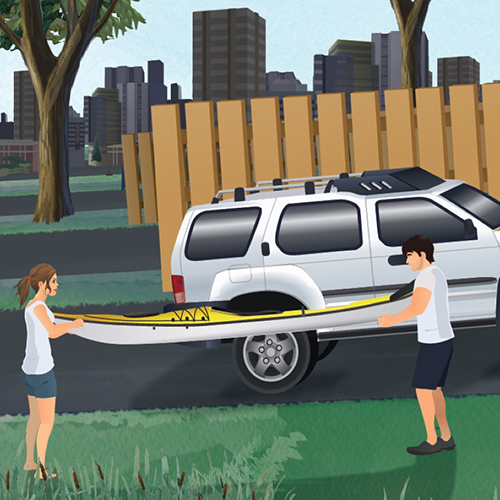
Step 1: Find a friend to help you—lifting and positioning your paddle craft on the roof of a vehicle can be a really awkward solo job and you may scratch your vehicle’s paint if you lose your grip!

Step 2: Make sure the roof rack is securely attached to the vehicle.
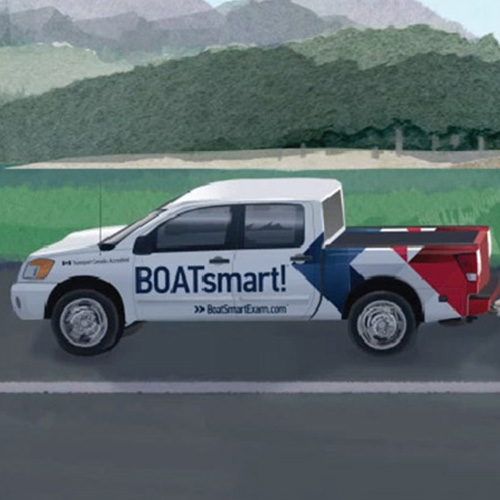
Step 3: Don’t have a roof rack? No problem—just place foam cushions on the roof of the vehicle to set the paddle craft on. This will keep both the roof and the paddle craft from getting scratched when they make contact.
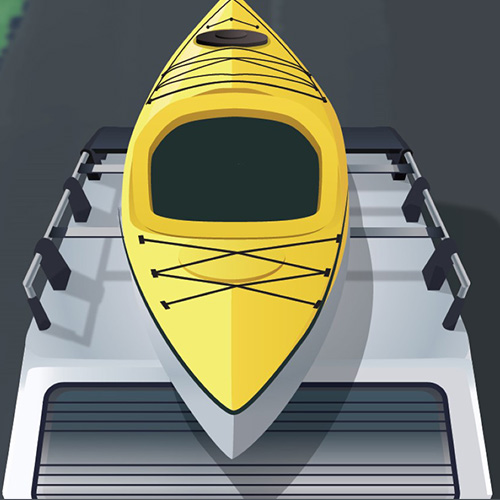
Step 4: From the back of the vehicle, position the paddle craft on the roof and then push the paddle craft toward the front of the vehicle until it feels balanced and centred.
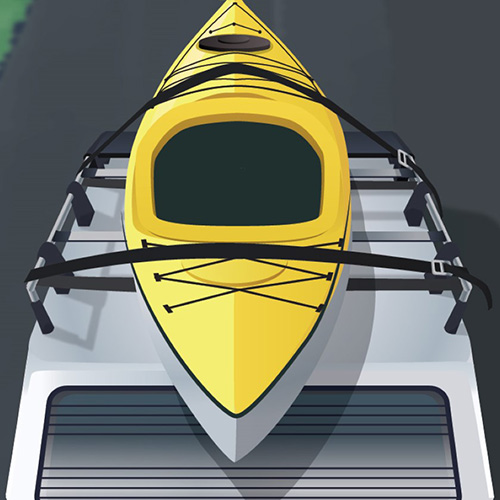
Step 5: Use two cross ropes or straps to attach the paddle craft to the roof or to the rack.
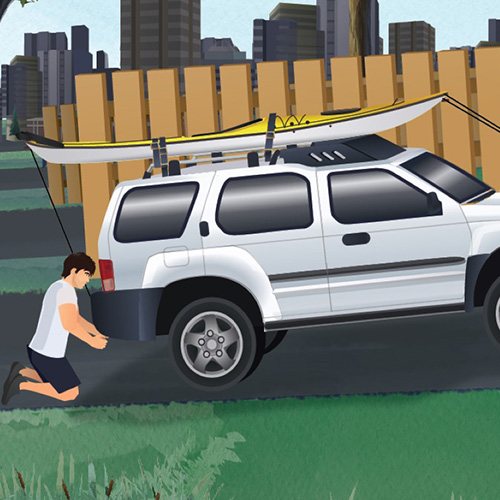
Step 6: Secure tie-down ropes or straps that are perpendicular to each end of the paddle craft to the bumper or another solid part of the vehicle—loop the straps to form a 'V' shape.
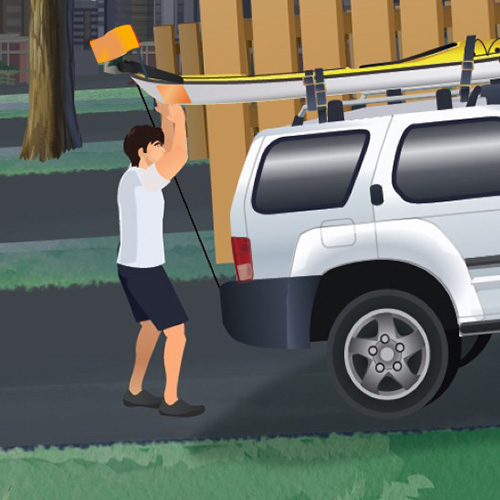
Step 7: If the paddle craft sticks out beyond the back of the vehicle, place a bright marker or flag on it.
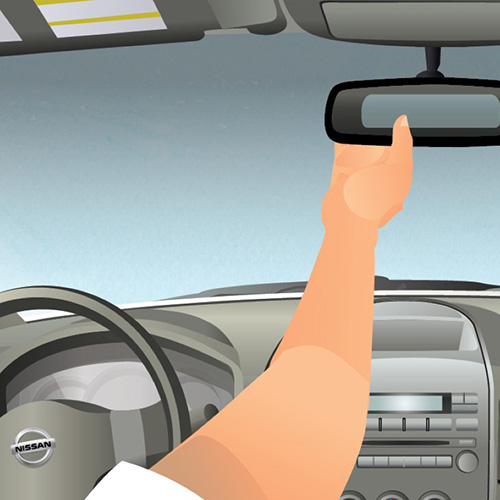
Step 8: Adjust your mirrors, buckle up and head to the lake!
Your tie-down straps should be made of high-strength nylon webbing and buckles. Never use bungee cords or elastic straps. They will allow too much ‘give’ and could cause the paddle craft to shift and potentially fall off the vehicle during towing. If you’re using rope, tie proper knots such as the 'trucker hitch,' the 'half hitch' or the 'bowlines' knot.





